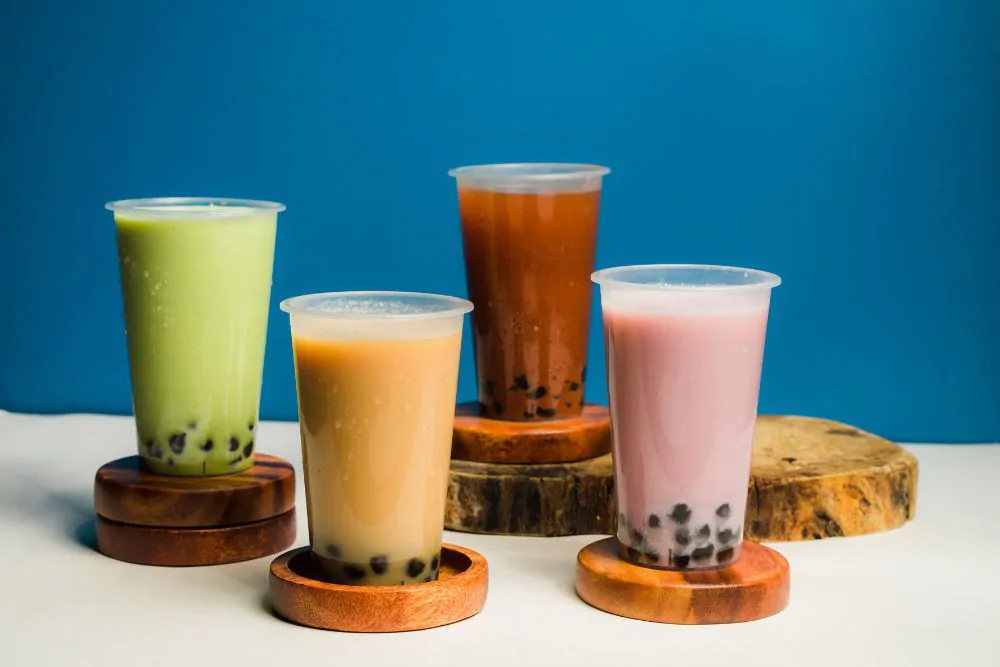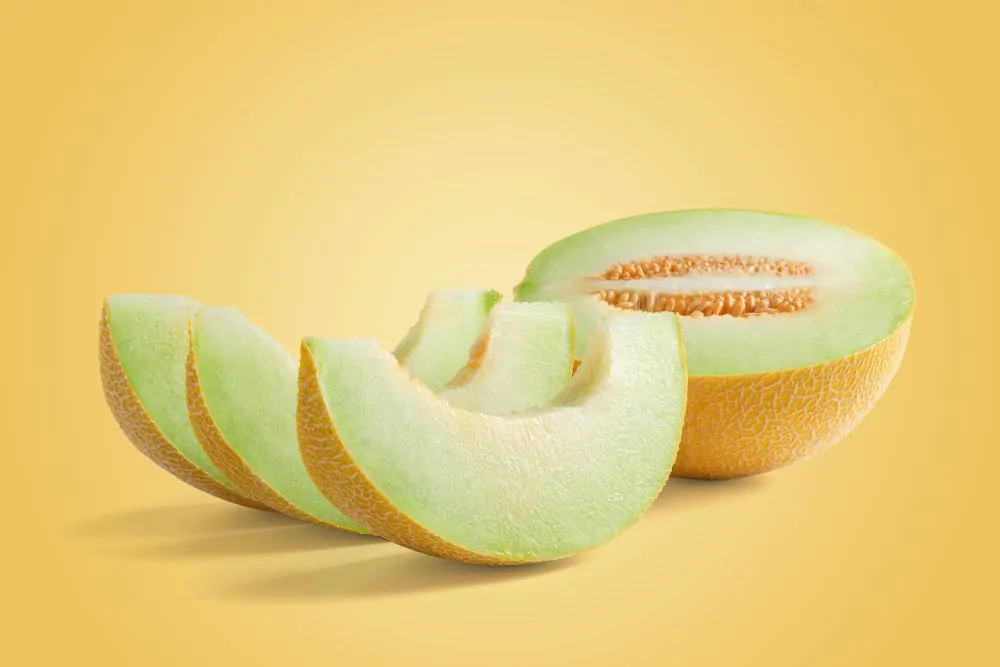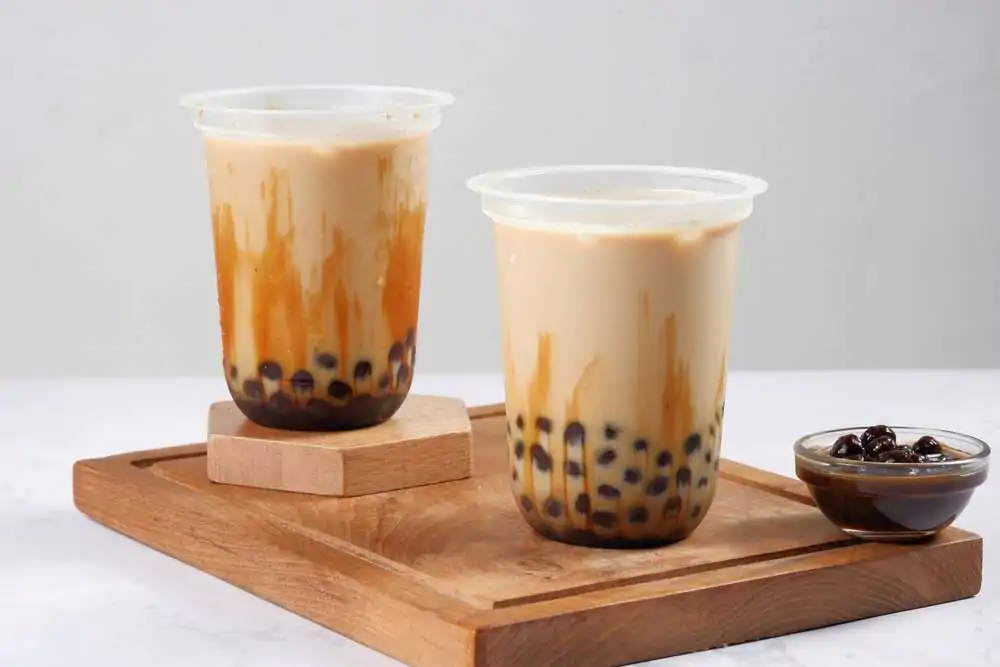Milk tea is usually much easier to drink and tastier than regular tea. Discover the top 13 milk tea flavors, including Hokkaido, black milk tea, and many more.

For a few years now, my friends have all been raving about bubble tea and boba tea. I’ve never really been into these drinks, but they keep talking about them as if they’re to die for. I finally tried them, and I only wished I had listened to them sooner.
While milk tea has been around for a long time, it’s been even more popular in recent years. It now seems like there’s a milk tea shop around every corner. From Hokkaido milk tea to Thai tea, I’ve discovered that there are so many varieties available.
So, let’s look at the best types of milk tea and see what they’re all about.
1. Hokkaido Milk Tea
Kicking things off is this unique tea from Japan. While most Japanese tea drinks use green tea as a base, this version uses black tea instead.
The name stems from the fact that this tea usually uses milk from the Hokkaido region of Japan. Hokkaido is the northernmost island of the country, and it’s well-known for its food and dairy production. So, while you could technically reproduce this recipe at home if you’re not using Hokkaido milk, you’re actually making something else.
How To Make Hokkaido Milk Tea
The recipe and preparation for this beverage are pretty straightforward, with the only important aspect being the source of your ingredients. For now, you can substitute as needed to get similar results.
Step 1: Measure Your Leaves
Realistically, any black tea leaves will work for this beverage, but you’ll want to spring for a higher-end product. Hokkaido tea is rich and robust in flavor when prepared correctly, so cheap tea leaves can make it less satisfying. You’ll need about one teaspoon of leaves for every six ounces of water.
Step 2: Heat The Water
I use an electric tea kettle, but you can use a stovetop model or something else if you like. Ideally, you can heat it to exactly 212° F for the best results.
Step 3: Steep The Tea
Pour the hot water over the leaves and let it steep for about three to five minutes. The longer the tea steeps, the more caffeine it will have. Strain the leaves out so you don’t drink them by accident.
Step 4: Sweeten The Tea
Traditional Hokkaido Milk Tea uses honey, brown sugar, or caramel to make it sweet. While you could use regular white sugar, it doesn’t deliver the same malty goodness. I highly recommend brown sugar if possible.
Step 5: Add The Milk
Finally, pour your Hokkaido milk into the tea. I usually like to drink milk tea in a glass mug so I can watch the milk blend with the water before mixing. This process looks better with darker tea varieties.
2. Okinawa Milk Tea
Moving a little further south, we come to Okinawa, which has its own twist on the milk tea recipe. Okinawa tea has been around for over a century, and it gets its name from the sugar, not the milk.
If you want to make a traditional Okinawa milk tea, you need to use Okinawan brown sugar. Although this substance is decadently sweet, it still has nutrients and vitamins.
The sugar is also known as kokuto if you’re looking for it in a Japanese specialty store. Alternatively, if you can’t find Kokuto or don’t want to pay a high price for it, you can substitute regular brown sugar or molasses.
How To Make Okinawa Milk Tea
This recipe is a bit more involved than others, and you’ll have to prepare the syrup if you’re using Kokuto instead of molasses. You’ll need to turn the Kokuto into brown sugar syrup before mixing it into the tea.
Step 1: Melt The Sugar
Put about two tablespoons of kokuto in a saucepan with a splash of water. Cook on low heat until the sugar starts to caramelize. Be careful not to burn off too much liquid, or the syrup will get stuck to the bottom, and you’ll ruin the pan.
Step 2: Steep Your Tea
You can use regular black tea leaves for this recipe, so choose some to your liking. Again, the longer you brew your tea, the more caffeine you have. Longer steeping times also make the tea a little more bitter, so plan accordingly.
Step 3: Make Tapioca Pearls
You can buy pre-made tapioca pearls, or you can make your own. Just follow the recipe on the bag to get them ready. Then, add the pearls to the syrup.
Step 4: Mix The Tea And Milk
Once your tea is ready, strain it into a separate mug and then add milk. I recommend either whole milk or creamer for a smoother and richer flavor. You can also use non-dairy options like oat milk or almond milk.
Step 5: Add The Pearls And Syrup
After heating these ingredients for a few minutes, you’ll have a nice, thick paste-like texture. Pour the syrup into the tea and let it sit for a while before stirring.
The syrup will settle on the bottom of your mug, so you’ll have to stir regularly while drinking. The longer it sits in the liquid, the sweeter the beverage.
3. Classic Milk Tea
Now that we’ve gotten the big milk tea varieties out of the way, I have to mention the classic version of this beverage. Classic milk tea is also known as black milk tea, as you just have to use black tea leaves and milk to get it right. Best of all, you can use whichever additional ingredients you like best, meaning this option is both simple to make and delicious to drink.
But how long have people been adding milk to tea? According to legend, it was the Tibetan farmers who pioneered this option. However, instead of using cow’s milk, they would use yak butter.
The idea was to add a high-calorie component to the tea to help the farmers stay warm and have the energy they needed to work. Since yak butter wasn’t very common outside of Tibet, cow’s milk was a suitable alternative.
Also, I should mention that classic milk tea is often served hot, but you can serve it cold, too. There are no wrong answers here.
4. Thai Milk Tea
As with boba, Thai tea is another favorite of mine and my friends. This unique beverage has such an incredible mixture of flavors that I’m always sure to order it whenever I’m eating Thai food.
Although its true origins are unknown, many believe it was invented by Field Marshal Pibul Songkram, who loved Western culture. Regardless of its origins, I can’t get enough of it.
If you want to make Thai milk tea at home, I highly recommend using a pre-made package. While you could use your own seasonings and flavors, the results can be wildly different from what you would get at a restaurant or store.
Usually, this tea is flavored with spices like star anise, cardamom, and cloves. The packaged tea will also have some food coloring to give the beverage its distinct orange color.
For the best results, you need to use sweetened condensed milk, not half-and-half or creamer. Condensed milk is sweeter and richer, so you get a much better drink overall. However, if you’re trying to cut down on your sugar intake, I suggest using almond milk instead.
5. Honeydew Milk Tea

For the last few entries on this list, I’m focusing on specific bubble milk tea recipes. If you want to save some money instead of going to bubble tea shops, it’s best to learn how to make these recipes at home. Best of all, because you’re in control of what goes into these drinks, you can make them as tasty (and healthy) as you like.
Honeydew melon tea is an excellent fruit tea that gives you a unique flavor profile. While most of the sweet flavor comes from the sugar, the melon also adds its own tastiness, so you get the best of both worlds.
How To Make Honeydew Milk Tea
- First, steep your tea in hot water for about five minutes, and then let it cool in the fridge.
- Next, you want to boil chewy tapioca pearls in a saucepan. If you don’t like them as chewy, you can boil them for longer so they’re softer and have a smoother mouthfeel.
- Once you strain the pearls from the water, dip them in white sugar and stir so they’re all coated evenly.
- Next, peel and blend your honeydew melon. I recommend using about half a melon, but you can use more or less depending on your preferences and how much tea you’re trying to make. Blend the melon with whole milk, coconut milk, or almond milk.
- Pour the tea, the blended mixture, and the tapioca balls into a pitcher. Then, you can serve the tea as needed.
6. Jasmine Milk Tea
Jasmine tea has been a longstanding favorite for people around the world for hundreds of years. Its origins are in China, where it has been grown, cultivated, and used for tea since the 12th century.
In this case, you’re simply brewing Jasmine tea leaves and adding milk and boba. As far as using a sweetener, I highly recommend brown sugar since Jasmine tea can be relatively light and delicate in flavor.
However, if you want less of a sweet taste, you can use sweetened milk and skip the sugar altogether. Vanilla almond milk works well in this case. Finally, you can make your own boba or buy pre-made packs and just add them to the tea when you’re done steeping and adding milk.
You can check out our list of the best bubble tea flavor combinations for some more inspiration.
7. Matcha Milk Tea
Matcha milk tea is one of the most popular bubble tea flavors because it blends the rich earthiness of matcha powder with the rich sweetness and creamy texture of boba milk tea. Technically, you can use any green tea powder, but matcha is the best option, so that’s what I recommend.
By itself, this is not a very sweet drink. However, you can add honey, molasses, or brown sugar to the mix to help cut down the intensity of the matcha. You can also use brown sugar boba if you want a little sweetness without going overboard.
Finally, while boba pearls are not required, I do recommend them so you get an extra layer of chewy textures and sweetness.
8. Taro Milk Tea
If you’re trying to create a vibrant milk tea to show off on social media, I highly recommend going with taro root. Taro is a common component of Asian desserts, and it creates a stunning purple color whenever it’s used.
For the best photo-taking results, I would suggest brewing the tea first and then adding sweetened condensed milk on top. Since condensed milk is thicker, it will take longer to mix, allowing you to get some pretty amazing shots with your camera.
The ingredients of this tea include:
- Taro powder: You can use fresh taro root, but it takes longer to process and doesn’t mix as easily as pre-made powder.
- Jasmine tea: You can also use a black tea variety like Earl Grey if you prefer.
- Milk: Coconut milk works really well if you’re not going with condensed milk for the gram.
- Boba pearls: Since taro is pretty mild, I recommend using another fruit-flavored pearl. This way, you get a little more freshness in the tea.
- Sugar: White cane sugar can work if you dip the pearls into it after cooking. Brown sugar or molasses can discolor the tea, so I don’t recommend it.
Make your tea and pearls first, then mix all the ingredients together. For best results, adding the sugar to the pearls after cooking ensures it will stick to them, even as they drop into the liquid.
9. Lychee Milk Tea
There are two primary ways you can make lychee milk tea. First, you can process the lychee fruit into a puree so it will mix with the rest of the liquid. Second, you can just chop the fruit so you have little bits floating around.
I recommend the first option if you’re adding boba pearls to the tea. Having two chunky elements can make the tea feel more like a soup than a beverage.
As far as sweeteners go, honey or molasses work best, although you can also try white cane sugar. When it comes to the milk, any variety works, but I would recommend something with a relatively mild flavor since the fruit and sugar will already make this a pretty sweet drink.
10. Red Bean Milk Tea
Red bean paste is pretty delicious because it’s slightly sweet and gives you an excellent texture. However, if you want to make this paste from scratch, you’ll have to cook the beans with water for several hours beforehand.
Alternatively, you can just buy pre-made paste and assemble the beverage as you go. For this recipe, you’ll need to mix the beans with sugar and a little bit of salt for the right flavor combination. Also, because the beans are so thick, you may not want to add any boba.
The Boba Milk Tea Story

If you’re like my friends, you have been on the boba tea train for a while now. Interestingly, this Asian beverage has only been around for about 40 years, as it originated in Taiwan in the 1980s.
Liu Han-Chieh was the owner of a tea store when he had the wild idea of serving tea cold instead of hot. That idea caught on pretty quickly, but what made the shop explode was the addition of boba pearls.
In 1988, Lin Hsiu Hui, a product development manager who worked with Han-Chieh, decided to add traditional tapioca pudding to the tea. Fen Yuan was already a popular Taiwanese dessert, so it made sense to blend the two.
Soon after, the pair discovered it would be better to cook the tapioca into dough-like balls. Hence, boba tea was born.
These days, you can get boba tea in many varieties, including fruit-flavored versions with tropical fresh fruit like strawberries and passion fruit. There’s also popping boba, which gives you a distinct mouthfeel as you pop the bubbles in your mouth.
Nonetheless, one of the most popular boba tea flavors is still the original that uses black tea, milk, and tapioca balls. Making your own boba tea at home is as simple as buying pre-made pearls (or cooking your own) and adding them to a mixture of black tea and milk. You can pick and choose the ingredients you like so your tea will be as delicious as possible.
Check out our guide on the most popular bubble tea flavors in Taiwan.

